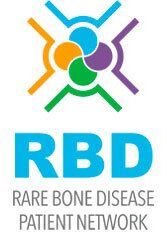
Introduction: Let's delve into an area of medical research that has significant implications for those suffering from Kaposiform Lymphangiomatosis (KLA) — a condition known for its high morbidity and mortality. Our focus is on understanding the role of the NRAS Q61R mutation in the pathogenesis of KLA.
What is Kaposiform Lymphangiomatosis? Kaposiform Lymphangiomatosis is characterized by multifocal lesions formed by spindle-shaped lymphatic endothelial cells and malformed lymphatic channels. Patients with KLA often suffer from hemorrhagic effusions, consumptive coagulopathy, and hemorrhage, making this condition particularly challenging.
The NRAS Q61R Mutation: In 2019, significant progress was made when the somatic NRAS Q61R activating mutation was identified in the tissue of KLA patients. This mutation is also present in over 20% of melanomas and other cancers, indicating a potential common pathway in these diseases.
Angiopoietin-2 and Its Role: Angiopoietin-2, a protein factor, is highly elevated in the blood of KLA and KHE patients. This discovery led to the development of a clinical test at Cincinnati Children's Hospital, allowing for more precise diagnosis and monitoring of the disease.
Investigating the Hypothesis: To understand the impact of the NRAS Q61R mutation, researchers developed doxycycline-inducible NRAS Q61R and NRAS WT lentiviral vectors to transfect human endothelial progenitor cells (EPCs). The hypothesis was that the NRAS Q61R mutation drives abnormal endothelial cell morphology and increased angiopoietin-2 production.
Findings from the Study:
- Cell Shape and Signaling Pathways: The study showed that cells with the NRAS mutation became spindle-shaped, indicating a shift in their morphology. This was accompanied by elevated levels of angiopoietin-2.
- Migration and Proliferation: Cells expressing the NRAS mutant gene migrated faster and had a higher rate of proliferation compared to those with the NRAS wild type.
- Implications for Treatment: Inhibitor studies using mTOR inhibitor Rapamycin and MEK inhibitor Trametinib showed promising results. Trametinib, in particular, inhibited the spindling morphology and reduced angiopoietin-2 levels significantly.
Towards a Better Understanding with Animal Models: Researchers have also developed mouse models expressing the NRAS mutation to further understand its effects in vivo. These models have shown characteristics similar to clinical features seen in KLA patients, providing a valuable tool for future research and drug development.
Conclusion: This groundbreaking research offers new insights into the pathogenesis of KLA and opens doors to potential treatments. The NRAS Q61R mutation and its effects on endothelial cells pave the way for targeted therapies, bringing hope to patients suffering from this challenging condition.
Stay informed about the latest developments in KLA research. For those affected by this condition, these findings may lead to more effective treatments in the near future. Together, we can continue to support research efforts aimed at understanding and eventually conquering Kaposiform Lymphangiomatosis.
Watch Dr. Timothy D. Le Cras, PhD, presentation at the 2023 LMI/LGDA/LGD Alliance Europe.










